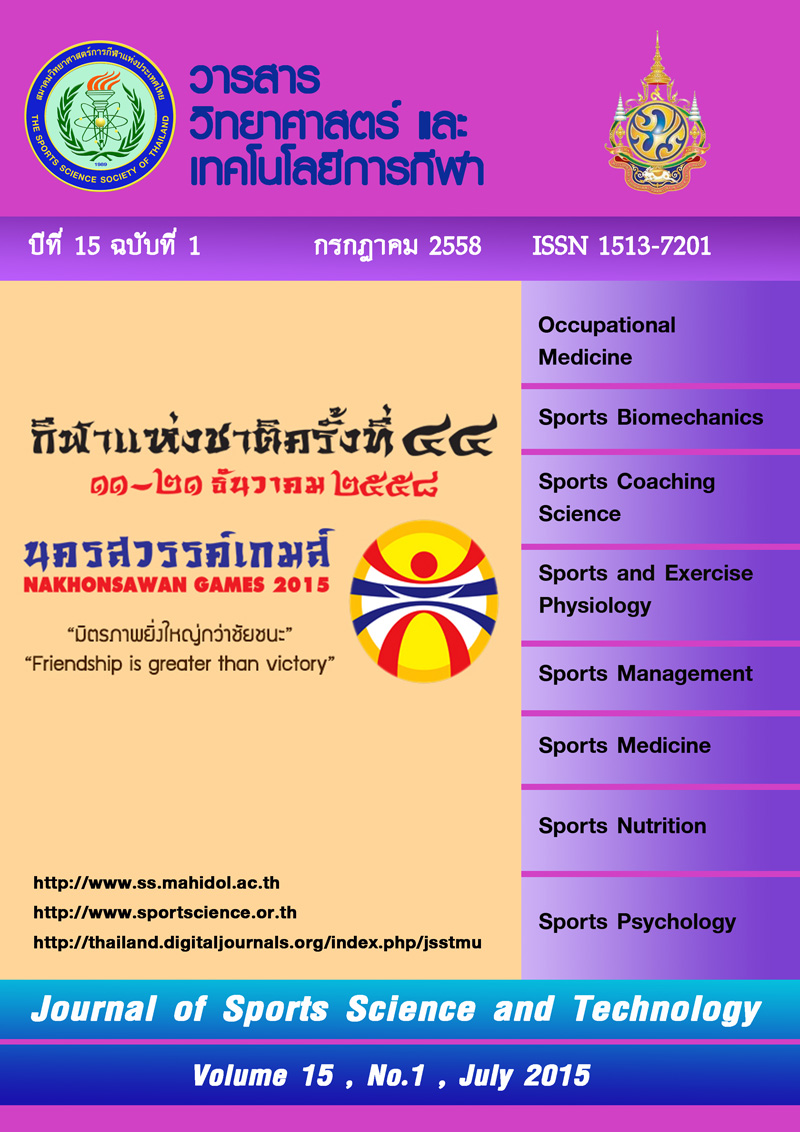COMPARISON OF 6-WEEK SINGLE LEG VS. DOUBLE LEG PLYOMETRIC TRAINING ON VERTICAL JUMP PERFORMANCE
Keywords:
Plyometric training, Jump, Power, Rate of force developmentAbstract
The purpose of this study was to investigate the effect of single-leg and double-leg plyometric training on vertical jump performance in collegiate athletes. Twenty-two male athletes (mean age 19.82 ± 1.71 years, mean weight 69.89 ± 10.9 Kg., mean height 1.75 ± 0.06 m.) volunteered in the study. Subjects were randomly assigned to either the single-leg training group (SL) or double-leg group (DL). Both groups received training twice a week for six weeks. The jump performance was assessed prior to the training program (pre-test) and after 6-week training program (post-test). Countermovement jump (CMJ), squat jump (SJ), and depth jump (DJ) in dominant leg were tested using a force platform. Dependent t-test was used to compare differences of jump parameters within group whereas an independent t-test was used to identify differences between groups. The level of significance was set at p-value < 0.05. The results showed that there were no significant differences between the two plyometric training types. In general, both groups showed improved jump performance after the training particularly SL. SL has improved significantly in terms of the jump high and power. In conclusion, SL and DL plyometric training provide similar results.
(Journal of Sports Science and Technology 2015;15(1): 17-26 )






